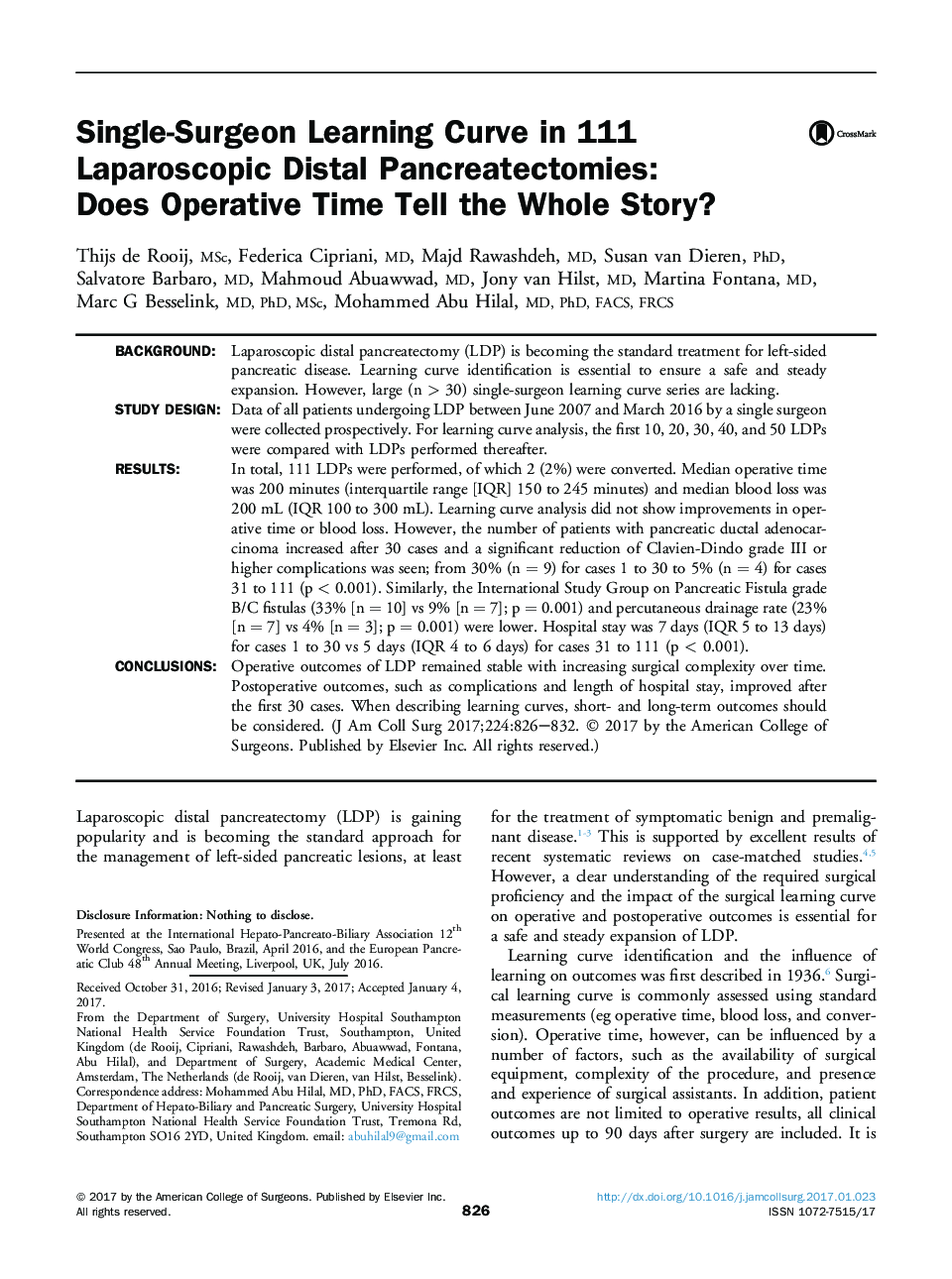| Article ID | Journal | Published Year | Pages | File Type |
|---|---|---|---|---|
| 5733003 | Journal of the American College of Surgeons | 2017 | 8 Pages |
BackgroundLaparoscopic distal pancreatectomy (LDP) is becoming the standard treatment for left-sided pancreatic disease. Learning curve identification is essential to ensure a safe and steady expansion. However, large (n > 30) single-surgeon learning curve series are lacking.Study DesignData of all patients undergoing LDP between June 2007 and March 2016 by a single surgeon were collected prospectively. For learning curve analysis, the first 10, 20, 30, 40, and 50 LDPs were compared with LDPs performed thereafter.ResultsIn total, 111 LDPs were performed, of which 2 (2%) were converted. Median operative time was 200 minutes (interquartile range [IQR] 150 to 245 minutes) and median blood loss was 200 mL (IQR 100 to 300 mL). Learning curve analysis did not show improvements in operative time or blood loss. However, the number of patients with pancreatic ductal adenocarcinoma increased after 30 cases and a significant reduction of Clavien-Dindo grade III or higher complications was seen; from 30% (n = 9) for cases 1 to 30 to 5% (n = 4) for cases 31 to 111 (p < 0.001). Similarly, the International Study Group on Pancreatic Fistula grade B/C fistulas (33% [n = 10] vs 9% [n = 7]; p = 0.001) and percutaneous drainage rate (23% [n = 7] vs 4% [n = 3]; p = 0.001) were lower. Hospital stay was 7 days (IQR 5 to 13 days) for cases 1 to 30 vs 5 days (IQR 4 to 6 days) for cases 31 to 111 (p < 0.001).ConclusionsOperative outcomes of LDP remained stable with increasing surgical complexity over time. Postoperative outcomes, such as complications and length of hospital stay, improved after the first 30 cases. When describing learning curves, short- and long-term outcomes should be considered.
